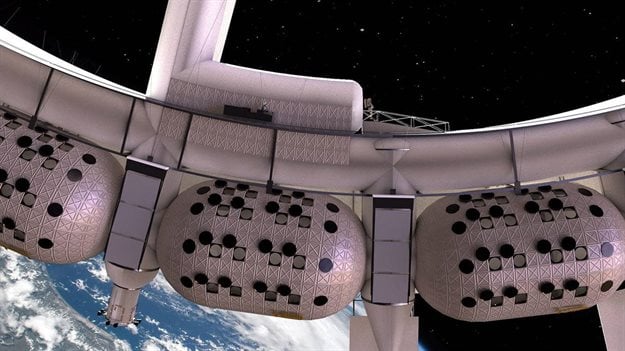
Top stories






Voyager Station is described as "a rotating space station designed to produce varying levels of artificial gravity by increasing or decreasing the rate of rotation".
"It will be the first habitable space station with artificial gravity," states OAC's website.
Expected to cover a total of 50,000m2 with a huge ring-shaped form, the project will include restaurants, bars and gyms as well as hotel rooms, accommodating up to 280 guests and 112 crew members.
"We're trying to make the public realise that this golden age of space travel is just around the corner. It's coming. It's coming fast," said John Blincow of OAC. "We cannot call SpaceX our partner, but in the future we look forward to working with them."

Construction of the Voyager facility is expected to start in 2026, and the company intends to welcome its first passengers to the hotel in 2027.
Voyager Station will be composed of three main parts: Docking Hub (Inner Ring), Outer Ring Truss (ORT) and Habitation Ring. Docking Hub (Inner Ring) is the first "piece of Voyager to be built is an un-pressuriwed ring structure with docking arms and stabilisers designed to capture and lock in place a visiting spacecraft to unload passengers and cargo".
"All passenger and cargo access to the station will be through a set of pressurised access tubes connecting the Docking Hub to the Outer Ring Truss," according to OAC's website.

The company said that "the outer ring truss will be built next. The truss is composed of a triangular unpressurised ring truss supported by a network of spokes to the Docking Hub". "The truss will be the backbone of the station and provide mounting for habitable modules, solar panels, radiators, and a rail transport system."
The Habitation Ring is the main part of the project. "Each module will have a pressurised volume of 1,809.5m3 and have two to three internal levels. Modules will come in a variety of configurations including: Air Water Power (AWP) module, Gymnasium and Assembly (GA) module, kitchen, restaurant, and bar (KRB) module, Crew Quarters module, which will be configurable for gravity and micro-gravity habitation."

There will be also privately owned modules used for villas, hotels, or commercial activity, while government-owned modules are used for scientific research, training, and staging facilities.
Article originally published on World Architecture Community.

Since 2006, World Architecture Community provides a unique environment for architects, architecture students and academics around the globe to meet, share and compete.
Go to: https://worldarchitecture.org/